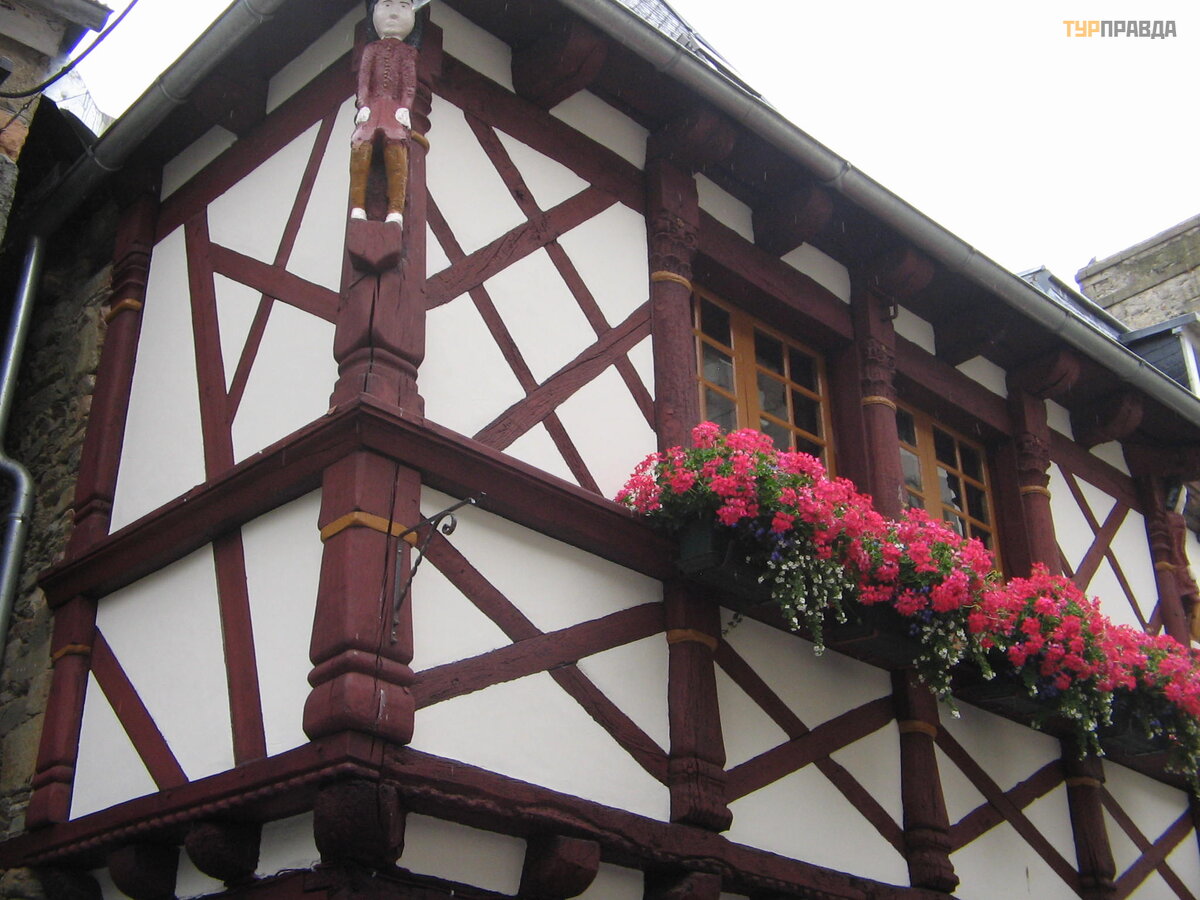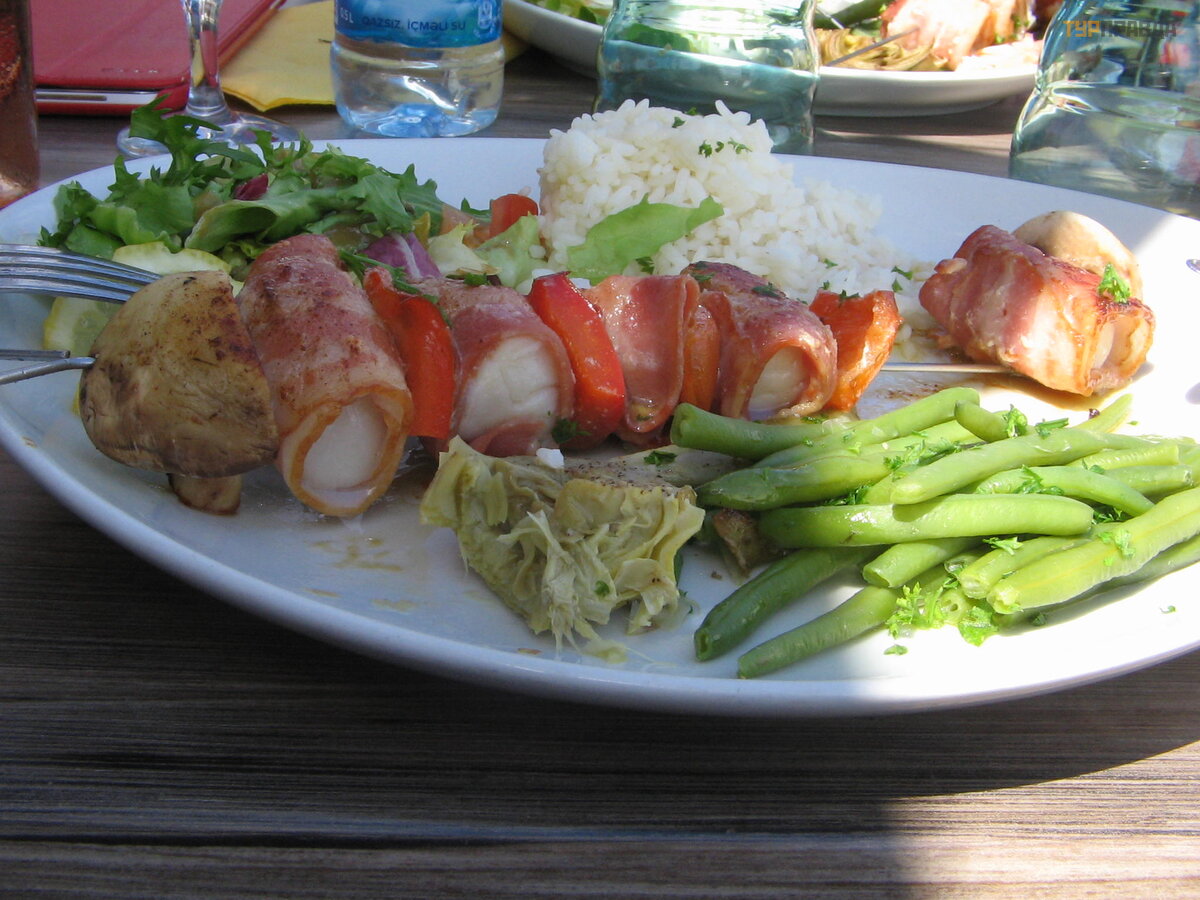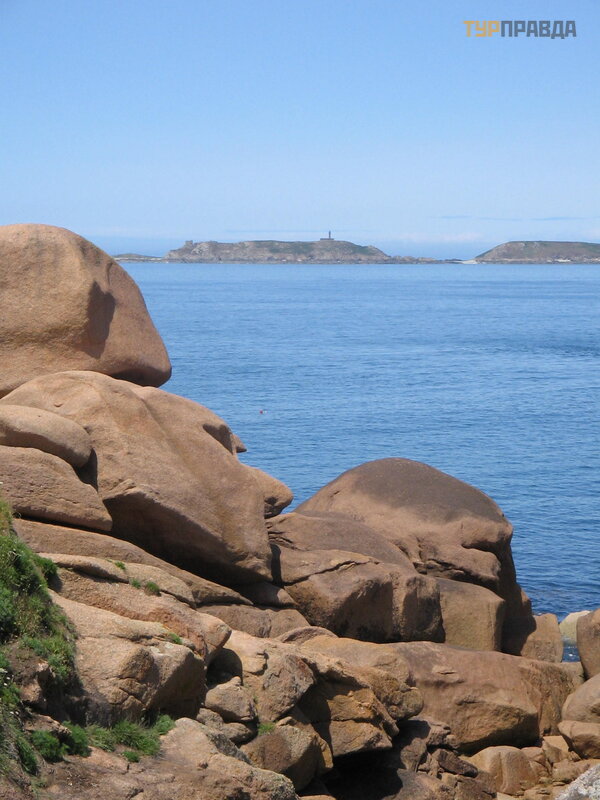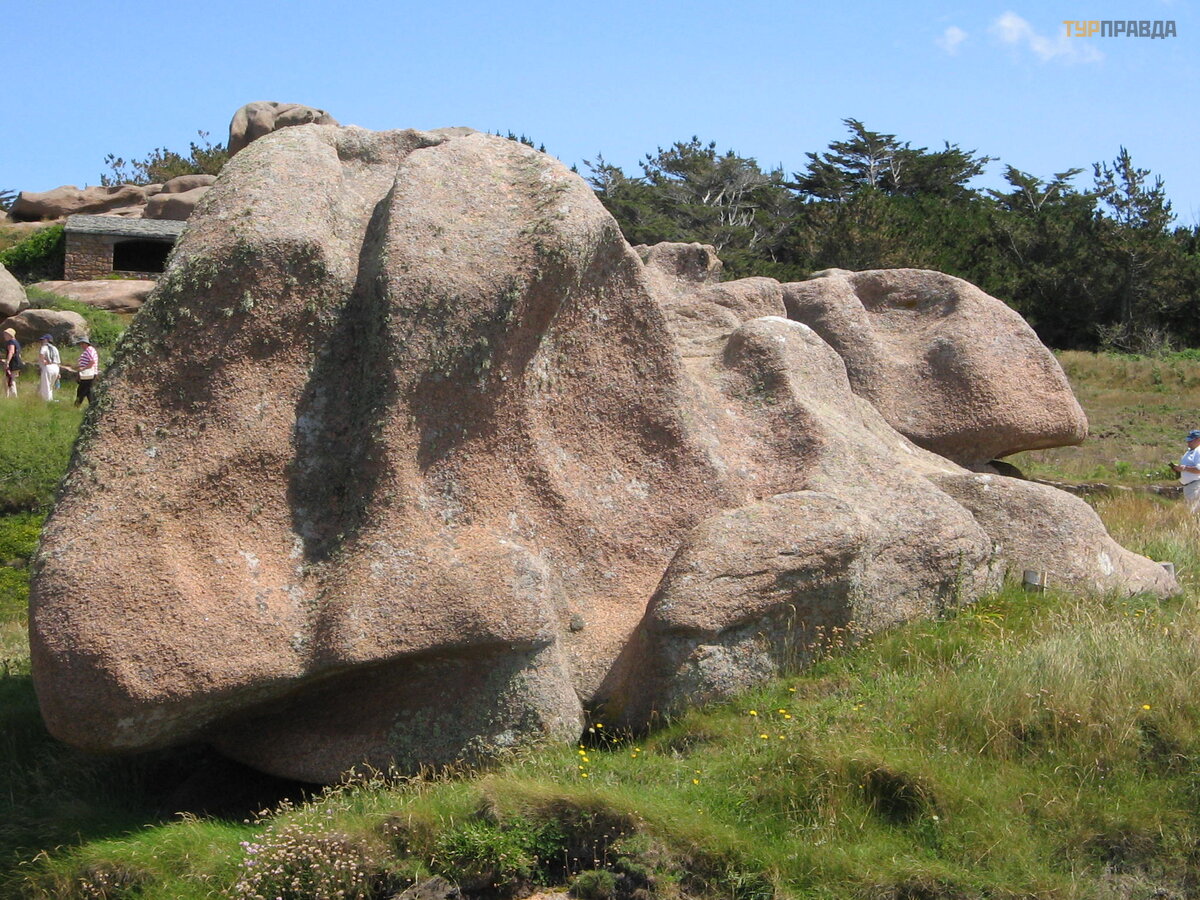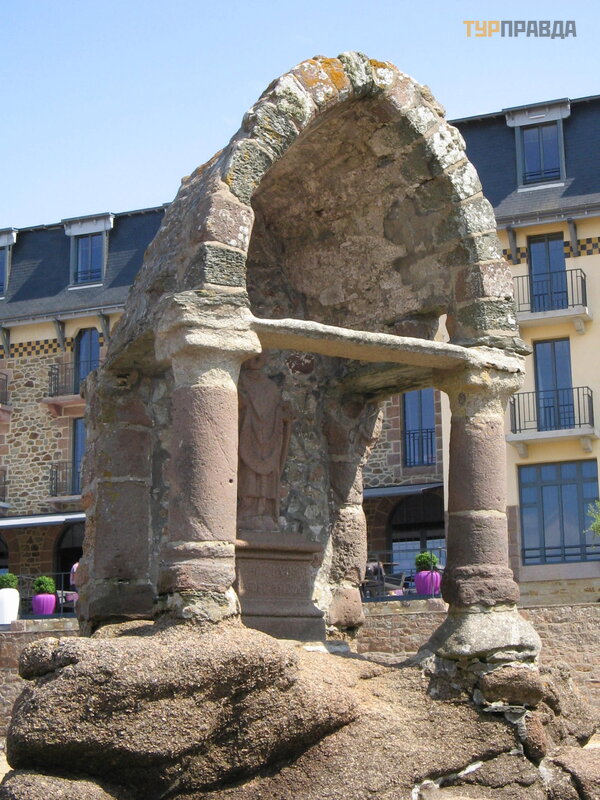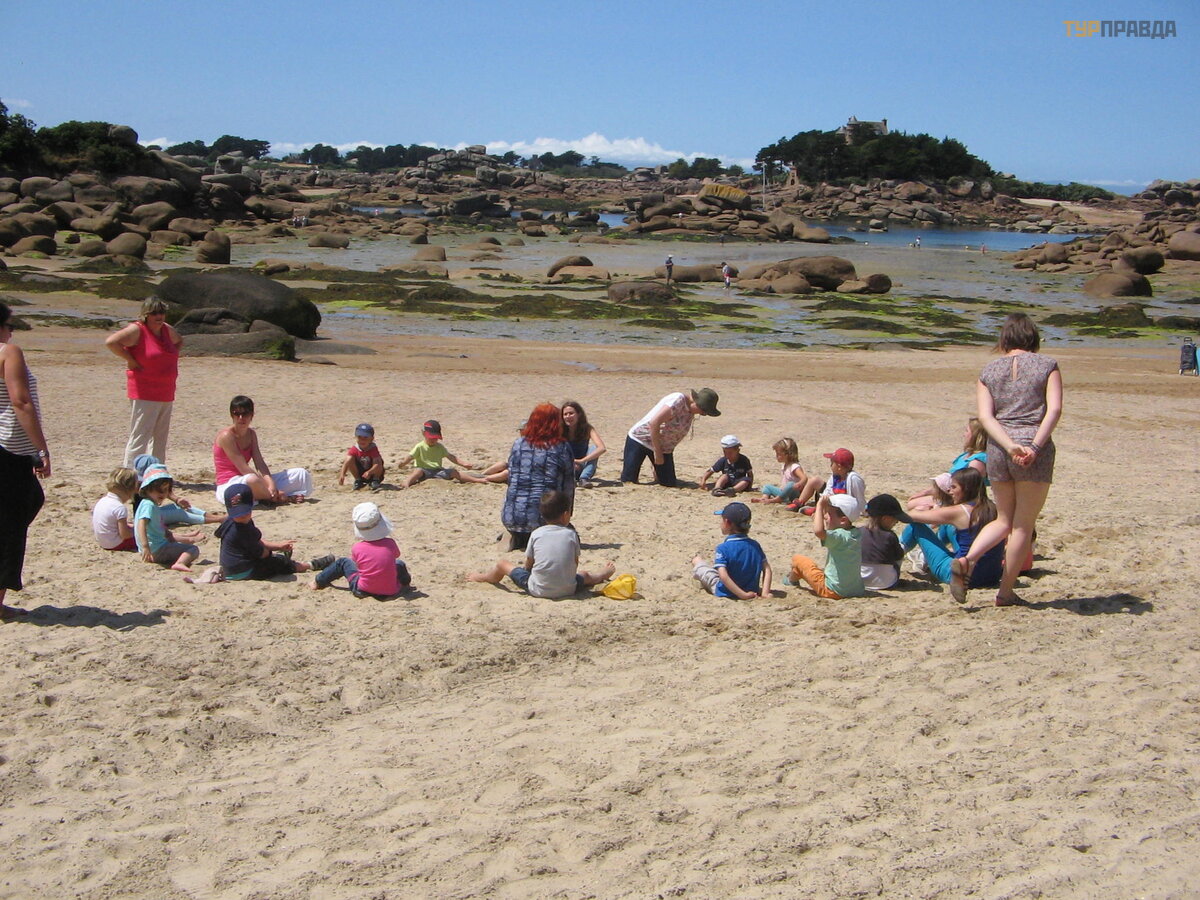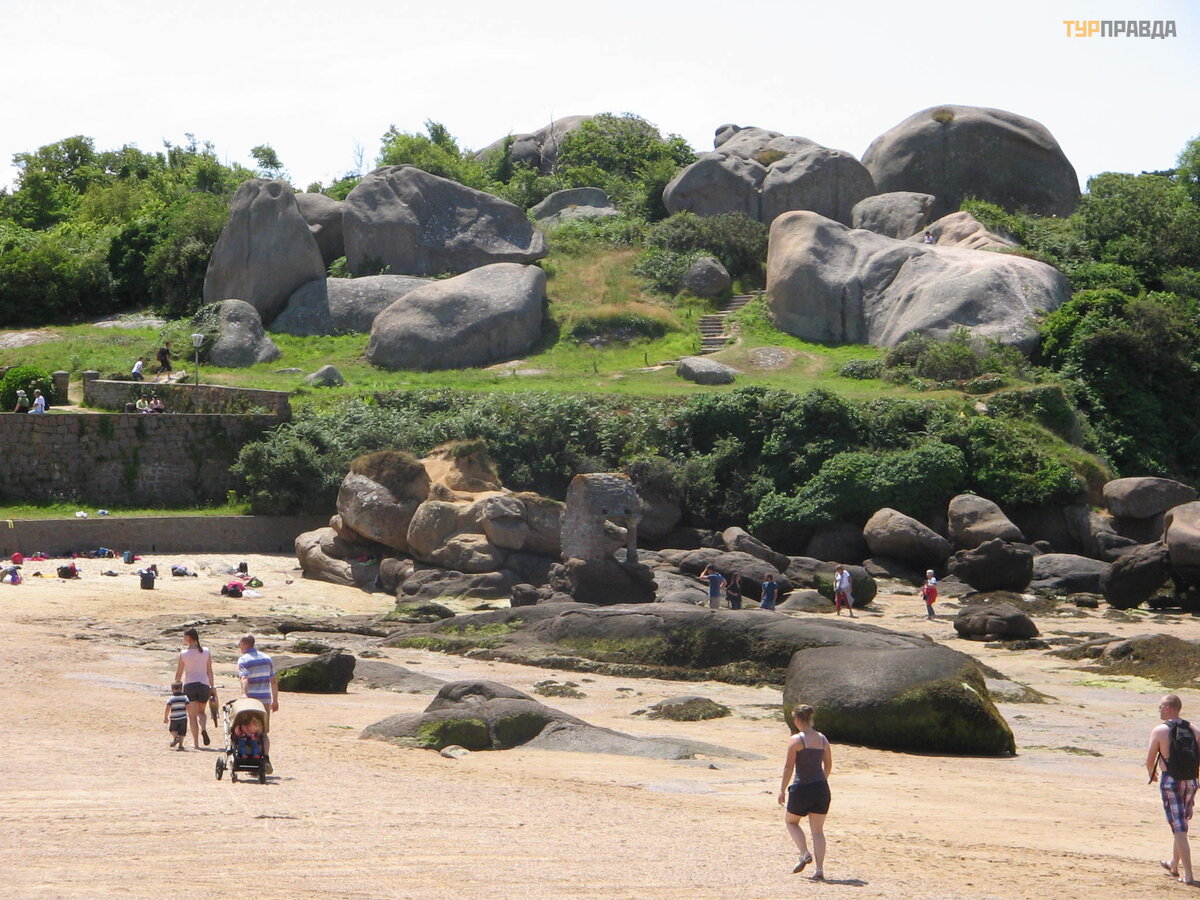Pink Granite Coast
In the morning, we finally leave Saint-Malo. Rain is coming. For the first time, Brittany looks like herself. The postcards I've seen in Saint-Malo and bought some are ironic about the climate. For example, nudists sunbathe in raincoats, proverbs that it rains only twice a week: once for 2 days, the second - 3. Such self-irony attracts.
The guide turned on Breton music, which I was looking for and could not find in the free city of Saint-Malo. I heard it on a cassette I brought back in the 90s, on others from the media library, in recent months on a Breton music site. It contains the sound of waves, the cries of seagulls, the hard and monotonous work of sailors-fishermen pulling long fishing nets.
The first stop is the town of Pampol. In the XIII century, the place is already known, because the monks of the nearby Abbey of Beauport (founded in 1202) brought food here to the market. Before the revolution, the abbey was considered almost the most beautiful in Brittany. It is believed that the Breton name of the city means "the tip of the water" (one of the two at the pond). The coat of arms of the city was granted by Louis XIV "sun" (sailboat on a blue background).
As elsewhere on the coast, the fishermen began to go to catch cod further and further into the Atlantic: to Newfoundland, to Iceland. There is a museum of the sea, in which they talk about this. Pampola hosts a festival of sailors' songs. The city became famous in the 19th century, thanks to T. Botrel's song "Inhabitant of Pampol". There is a market on Tuesdays. Half-timbered houses of the 15th-16th centuries have been preserved. They advise you to try Pampolian oysters.
Next stop is Perros-Guirec. Here we have lunch. We decided to try the St. Jacques in the form of a barbecue, because we are leaving the English Channel farther. Scallops are placed on the coat of arms of the town. But not because here they differ in some special taste or live in mass numbers, but because one of the routes from the British Isles along the Bay of Biscay to Santiago de Compostela, whose emblem is this scallop, passed here.
scallop skewers
The first part of the city's name comes from the Breton words "extreme" and "cape, hill"; the second - on behalf of St. Girek, who came with his companions to these places from the British Isles to preach Christianity in the 7th century. A place with this name has been mentioned since the 12th century.
Perros-Guirec is a resort with its own casino. There is a thalassotherapy center, 3 beaches. The houses are like castles. The British love to visit the city.
The city has two emblems: one is a seabird with a colored beak (the largest colony in France, which nests in the ornithological reserve "archipelago of the 7 islands" (only one island of Monks is allowed from March to October); photo see "macareux bretagne "in the search engine) and hydrangea. There are really a lot of hydrangeas here. Its festival takes place in early August and is accompanied by traditional Breton songs. Not only well-known local performers and groups (Dan Ar Braz, Tri Yann, Yug Ofre, etc. ) come to it, but also groups from other countries.
In addition, in April there is a comic book festival that appeared in these places in the 90s. The city regularly becomes the stage of the single oceanic Figaro races.
The artist Maurice Denis lived in the town (the house has been preserved). "Grand Hotel" on the main beach - an example of art deco. An interesting object - the Clarte semaphore - can be visited only once a year, on World Heritage Day in September. There is an 18th century windmill, it was restored from the outside, but the mechanisms inside are lost, there is no access inside. There is a museum of the history and traditions of Lower Brittany. On the way to Ploumanac there is a pink granite sculpture park.
The rain ended back in Pampola. Initially, it was planned to follow the customs trail from Perros-Guirec to Ploumanac. But the plans changed because of the morning rain: the gorse will be wet. And after lunch we were taken by bus to Plumanak. From there I went almost to Perros-Guirec. I did not meet any wet bushes.
Scenic path of customs officers; chapel of st. Gireka; Castaeros Castle is why people go to Ploumanac. The name of the city comes from the Breton "monk's pond".
The trail, winding between giant pink granite "figures" (some have names, and everyone who walks finds his own associations, seeing these giant stones), was restored a dozen years ago, this is reported everywhere, tourists are asked not to spoil what they what is restored, i. e. do not turn off the path anywhere. It's probably reasonable. Otherwise, this feeling of savagery will disappear, which, if there were no people constantly walking along the path (and they say there are more than a million a year), would not let go along its entire length. Among the pink granites are the Mean Ruz lighthouse and tidal mills (the first such mills were already here in the 14th century). The 19th century lighthouse was restored after World War II.
I see a turtle
The most famous place of Plumanak is the chapel of St. Girek, standing on the beach in the creek and "floating" at high tide. Under the canopy today stands a stone statue of a saint who came from the British Isles with his associates to these lands. It is assumed that the chapel was built at the end of the 11th - beginning of the 12th centuries. At the beginning of the 20th century, the wooden statue of the 14th century fell into disrepair and was replaced with a stone one. Probably, the custom of sticking needles into the saint's nose contributed to the dilapidation. According to custom, unmarried girls did this: if the needle gets stuck, the girl will marry before the end of the year, if not, she must try again later. The modern saint with a nose is also not doing well (tourists continue the tradition? ). Well, his hands were mutilated by vandals before the Second World War. There is another tradition associated with this saint: kissing the saint's feet so that the child will go earlier. The chapel is depicted on the coat of arms of the city.
St. Girek's Chapel
The Church of St. Girek above the creek was built in the 16th century by the monks of one of the monasteries. The wooden statue of Girek was moved there from the chapel on the beach. Several more rarities of the 15th-16th centuries are kept in the same church.
Castaeros Castle, built in the 19th century by a Polish engineer (private area), is associated with the names of Mickiewicz and Sienkiewicz. The son of the first visited here, and Senkevich wrote here “Where are you going? ”.
castaeros castle
The so-called "pardons" are arranged for tourists in Brittany these days. Previously, it was a religious ceremony under the protection of the Mother of God on the occasion of seeing off sailors to dangerous fishing in the North Atlantic. Today, pardons are held more often in the summer, during the holiday season.
At the church of St. Jacques in Perros-Guirec (still connected with the same path of St. Jacques in Compostela) "sorry" takes place on the last Sunday of July. At the chapel of Our Lady of the Light in the same place (built in the 15th century on the vow of the Marquis Barak, who escaped from a shipwreck), “sorry” - on the day of the Assumption of Our Lady in mid-August for several days. At the chapel of Our Lady of the Compassion in Plumanak (previously there was a chapel of St. Mark on this place) “sorry” on the second Sunday after Easter. Between the chapel of St. Girek on the beach and the church there is a "pardon" on the weekend before the Ascension (mid-August). In the commune there is also a new chapel of St. Joseph or Naval raid (XX century).
on the beach of St. Girek, where "sorry" begins
